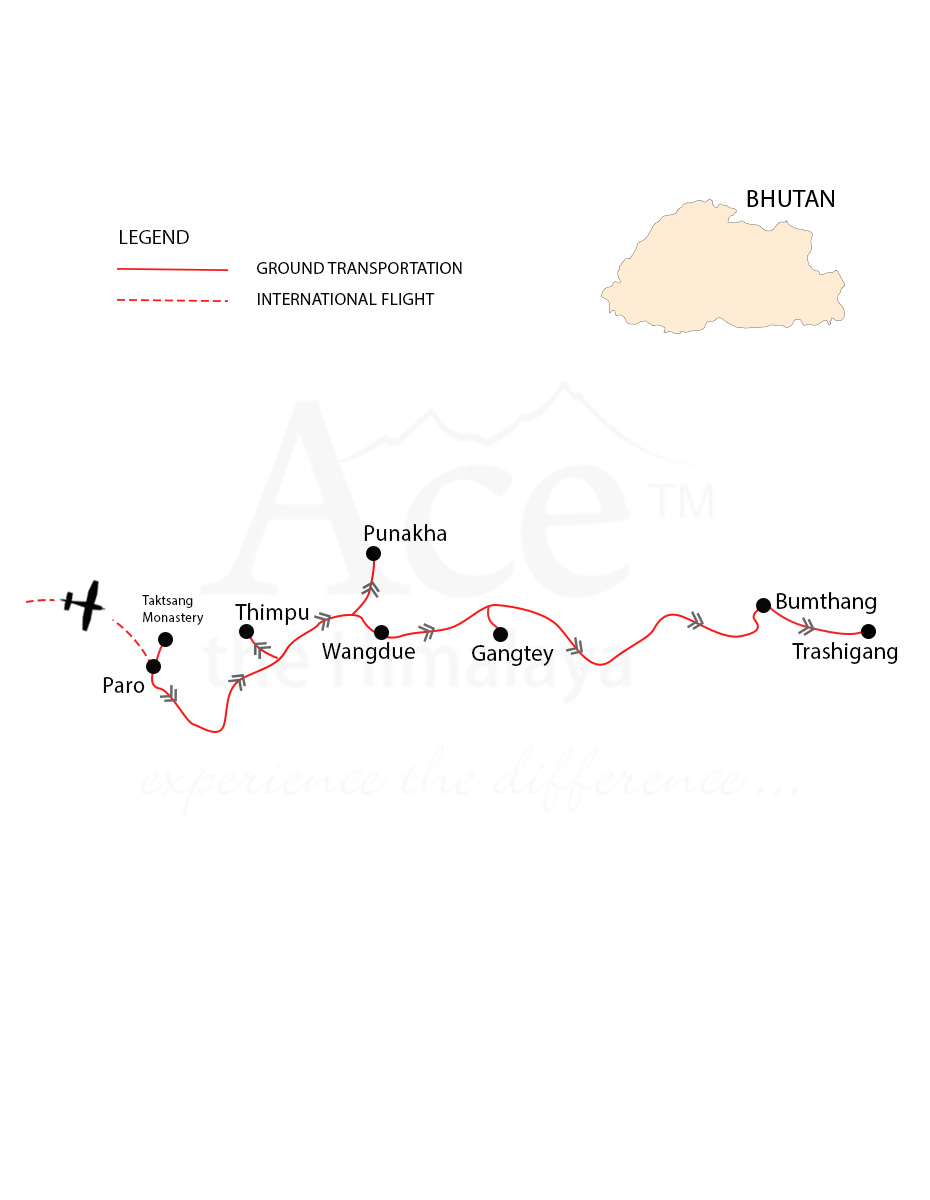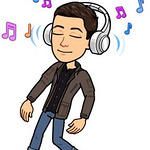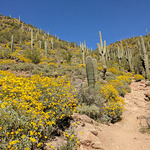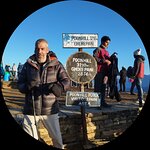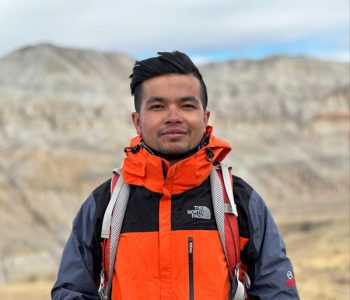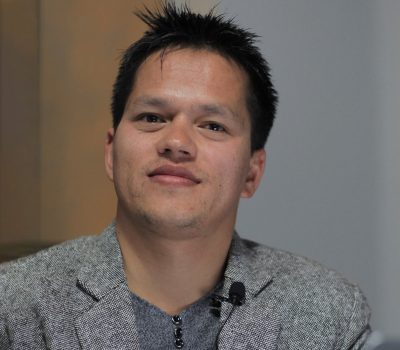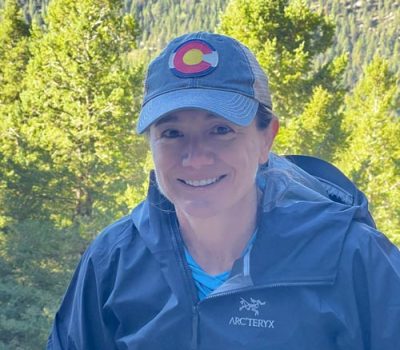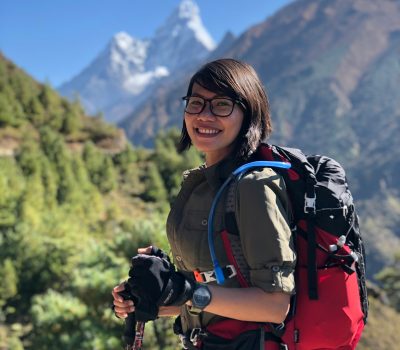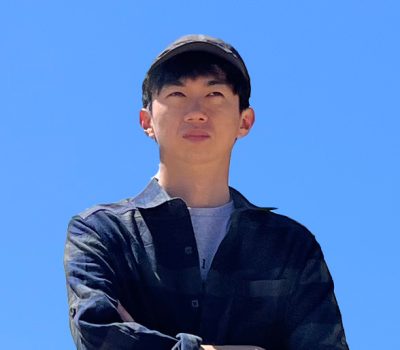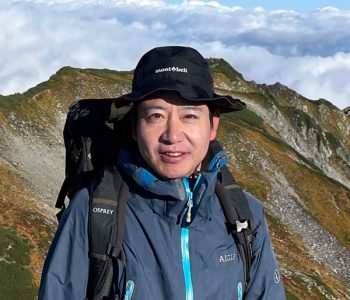Mongar and Trashigang - 16 Days
Mongar Trashigang - Mongar (1,700m) is the headquarters of the district of the same name. Trashigang is known for its woodwork and weaving.
Trip Highlights
- Sightseeing in Paro, Thimphu, Punakha, Bumthang, Wangdue, Gangtey, Khaling.
- Taktsang Monastery (The Tiger’s Nest)
- Mongar and Trashigang Festival activities
Trip Overview
Mongar (1,700m) is the headquarters of the district of the same name and is little more than a stopping place between Bumthang and Trashigang, A tourist guest house offers basic amenities, a good view encompassing a large area and a lovely garden. Monger is also the first town in the mountains that is situated on a hillside rather than a valley.
Trashigang (1,150m) is the biggest urban center in the mountains, after Thimphu. The administrative and economic hub of Bhutan’s most populous region, Trashigang is known for its woodwork and weaving. Trashigang also has an impressive dzong, from which the town takes its name. Built on spur in 1656 – 1659, overlooking the Gamri River, 400m below, its name aptly translates as “fortress of the auspicious mountain”.
Short Itinerary
November 13 – Arrival at Paro (by Druk Air) and drive to Thimphu. Overnight at a hotel.
November 14 – Thimphu sightseeing. Overnight at a hotel.
November 15 – Thimphu to Wangdue. Overnight at a hotel.
November 16 – Wangdu to Gangtey. Overnight at a hotel.
November 17 – Gangtey to Bumthang. Overnight at a hotel.
November 18 – Bumthang sightseeing. Overnight at a hotel.
November 19 – Bumthang to Mongar. Overnight at a hotel.
November 20 – Mongar Festival. Overnight at a hotel.
November 21 – Mongar to Trashigang. Overnight at a hotel.
November 22 – Trashigang Festival. Overnight at a hotel.
November 23 – Day excursion to Khaling. Overnight at a hotel.
November 24- Trashigang to Bumthang. Overnight at a hotel.
November 25 – Bumthang to Wangdue. Overnight at a hotel.
November 26- Wangdue to Thimphu. Overnight at a hotel.
November 27 – Excursion to Taktshang Monastery then drives to Paro. Overnight at a hotel.
November 28- Departure from Paro
Departures & Availability
We do not have fixed departure date for this trip. This trip can only be organized upon your request. There is an option of private and tailor-made journey best suited for you, your family and friends. We have price discounts according to the group size, the bigger your group, the bigger your group discounts. We allow complete flexibility on your departure date, please choose your preferable date.
Price Includes
- Pick up from and drop off at the hotel and the airport on a tourist car / van /minibus.
Standard government-approved accommodation (in twin sharing rooms) for the duration of the tour.
Full-board meals – breakfast, lunch, dinner and tea & snacks – for the duration of your stay.
Drinking water for the duration of the tour.
Country presentation and tour Briefing on the evening of Day1 with welcome drinks.
Licensed English-speaking Bhutanese tour guides.
Private transportation and a designated driver within Bhutan. Toyota 4WD luggage vans and light trucks for group travel. Luggage will be hauled by horses, mules or yaks at higher elevations.
Monument and museums entrance fees for all sightseeing locations detailed in the itinerary.
Cultural afternoon/evening sessions with traditional mask and folk dances (with beverages). Only for group tours.
Bhutan visa fees and processing assistance.
Government royalty (35% of $200), which goes to the country’s health and education projects.
All route access and monument entry permits and fees.
All government taxes, official expenses and tourist service charges.
Price Excludes
International airfare and airport departure tax.
- Your travel insurance (mandatory for the trip, see the travel insurance page).
Tips for tour guides, porters, driver, hotel lobby and in restaurants. (Tipping is expected)
Personal clothing and equipment.(See the equipment section for detail information)
Expenses of personal nature, such as laundry.
Alcoholic and cold drinks.
- Any expenses other than the Price Include section
Detailed Itinerary
Expand AllDay 01: November 13 - Arrival at Paro (by Druk Air) and drive to Thimphu
You can take flight to Paro from Bangkok, New Delhi, Kathmandu, Dhaka etc. We recommend you to fly from Bangkok because Druk air offer everyday flight from Bangkok – Paro – Bangkok whereas Druk air do not operate everyday flights from other sectors.
The flight into Paro on Bhutan’s national carrier, Druk Air, is a befitting introduction to the spectacular beauty of the country. In clear weather, magnificent views of the world’s highest peaks give way to the lush green Paro valley as you land. The first gift from Bhutan will be the cool, clean fresh air as you step out of the plane. After clearing customs and visa control you will drive you to Thimphu, the modern capital of Bhutan. The drive will take around 1 hour. Thimphu has a population of about 98,000. The town is made up of just three lines of shops and is the only capital in the world without traffic lights.
Day 02: November 14 - Thimphu sightseeing
In the morning we first stop at Bhutan’s National Bank to exchange currency as well as visit the post office to view and purchase elaborate and exquisite Bhutanese collector item stamps. We then will visit the National Memorial Chorten which was built in 1974 in memory of the third king. Also, the National Library where ancient manuscripts are preserved and the Takin Reserve which protects the national animal of Bhutan. After lunch visit the Textile Museum and the Arts and Crafts School. A visit to the House of Incense and House of Paper are always favorites as well.
Day 03: November 15 - Thimphu to Wangdue
Today we will depart for Wangdue. The drive takes about 3 hours. En route stop at Dochula Pass for tea and biscuits and enjoy a view of the Eastern Himalayan Mountains amongst hundreds of fluttering prayer flags and beautiful hilltop chortens. We enjoy our scenic drive and stop for lunch in Lobesa. We now check into our hotel in Wangdue. Rest and relax and enjoy the pristine views from your room. Later we visit the Punakha Dzong. This is the winter residence of Bhutan’s spiritual leader, the Head Abbot, and the Central Monastic Body. The Dzong is built between two rivers known as Phochu (Male River) and Mochu (Female River). After Punakha take a short hike to Chhi-Med Lhakhang in the picturesque Lobesa valley, to visit the temple of one of Bhutan’s foremost saints, Lama Drukpa Kunley, also known as the Divine Madman.
Day 04: November 16 - Wangdu to Gangtey
After lunch we drive to Gangtey in Phobjikha, a glacial valley on the western slopes of Black Mountain national park. The valley is a designated conservation area and borders the Black Mountain National Park. Because of the large flock of black-necked cranes that winter here (from late October to late March), it is one of the most important wildlife preserves in the country Phobjikha Valley is circled by beautiful pine covered mountains. Along the way, look for nocturnal red pandas that sleep in the trees during the day. At the valley’s center, rising dramatically from a small ridge, stands Gantey Gompa, one of the oldest Nyingma Bhuddist monasteries in Bhutan. Gantey Tulku Rimpoche, the head lama of Gantey Gompa, is the ninth incarnation of Terton Pemalingpa, the famous 14th-century Treasure Revealer from Bumthang, one of Bhutan’s famous Buddhist saints and an ancestor of the ruling Wangchuck dynasty. Visit the Gangtey monastery overlooks the large green expanse of Phobjikha Valley. The extensive complex consists of the gomba itself, the monks’ quarters, meditation centers, and schools.
In the evening visit the Black-necked cranes roost in the swampy marshland from observatory overlooking the fields.
Day 05: November 17 - Gangtey to Bumthang
Enjoy an early morning visit once more to view the magnificant Black Neck Crane. We then depart towards the village of Trongsa. The drive from Phobjikha to Trongsa takes about two and half hours. Our route crosses Pele La (11,155 ft), which is marked by a chorten and an array of prayer flags. If the weather is clear we should see Mt. Jumolhari (23,684 ft) and other peaks from the pass, which marks the boundary between western and central Bhutan as well as the western border of Jigme Singye Wangchuck National Park. Beyond Pele La is Longte Valley where people raise sheep and yaks. We’ll come to the village of Rukubji Valley, with its big school and Gompa.
The houses here are clustered amid extensive fields of mustard, potatoes, barley, and wheat. As we drive down through rhododendrons and ferns, we’ll reach Chendebji village. This was a night halt for mule caravans traveling from Trongsa during the reign of the 2nd King of Bhutan. Just below Chendebji village is the Chendebji chorten, a large white structure beside a stream. This chorten is modeled after Swayambhunath in Kathmandu and was built in the 19th century. The last village before we reach Trongsa is Tangsibji, which affords us a full view of Trongsa Dzong and its distinctive yellow roof. Built in 1648 AD it is presently the administrative seat of the district and the home of the monastic school. Built at split-levels on a narrow spur, the Dzong is an architectural wonder. The view from here extends for many miles and in the old days, it was a vigilance point for both the eastern and western routes. Thus, the strategic importance of this Dzong. Continue onwards to central Bhutan. Today is a long day of driving to reach our destination tonight in Jakar. We will take ample breaks and rest stops. Tonight we overnight at local Lodge in Jakar valley of Bumthang; Bhutanese family hospitality at its finest!
Day 06: November 18 - Bumthang sightseeing
In the morning we visit the historical Jakar Dzong, built in 1646 A.D. by MinjurTenpa, the third Druk Desi (Temporal Ruler). In 1683 A.D. it was extended by Gyalse Tenzin Rabgay, the fourth Desi. Visit several ancient and sacred monasteries such as the Jambay Lhakhang, Kurjey Lhakhang, Kencho Sum Lhakhang, Tamshing Lhakhang and Jakar Dzong. Return to our lodge for lunch and in the afternoon we take an excursion to the Thangbi Monastery, an 18th Century temple Evening: Visit a local farm house and enjoy Bhutanese hospitality; perhaps try a local favorite; Arak! Stops along our way to watch expert textile weavers at their ancient and back strap looms; here is the best place for purchase of quality Bhutanese textiles.
Day 07: November 19 - Bumthang to Mongar
After an early breakfast, gear up for a fantastic drive to Mongar. The journey is long and crosses Thrumshing La, which at 3,800m, is the highest pass. Check in at hotel/guest house. Mongar is the district headquarters but hardly more than a transit town. It is also the first town built on a slope instead of the usual valley. This is characteristic in eastern Bhutan where there are few valleys. The true homeland of the Eastern People; the Sharchogpas, begins from Mongar.
Day 08: November 20 - Mongar Festival
Visit the Mongar Dzong to attend a full day at the remote and unique Mongar Festival. Today you will witness Mongar Festival- Bhutanese “country style”. Mongar Dzong is a new Dzong just completed recently. It was built in the 19th century, restored in 1953 and again in 1990 after being demolished by a fire. The administrative scat and the monk body reside in the Dzong. Enjoy and evening strolls through Mongar quaint village.
Day 09: November 21 - Mongar to Trashigang
From Mongar we drive to Trashigang; we stop for lunch and continue onwards to visit the Trashigang Dzong and attend Trashigang Festival. Again your senses are awakened and you are transported into another time and place. Converse with Bhutanese locals as you gain merit from the religious ritual of purification you now witness. Good Fortune is yours.
Day 10: November 22 - Trashigang Festival
Return to attend the last day of the Trashigang Festival; you are fully immersed in Bhutan’s rich culture. Masked dancers whirl in medieval religious purification dance and evoke blessings on all who attend; your camera is snapping away.
Day 11: November 23 - Day excursion to Khaling
After an early breakfast, drive to Khaling. Enroute, visit Sherubtse, Bhutan’s only college and the sacred Zangtokpelri Monastery. At Khaling, visit the blind school and Traditional weaving centre and return to Trashigang in the evening; Dinner in Kanglung at a local house and then return to Trashigang.
Day 12: November 24 - Trashigang to Bumthang
Begin our return drive westward as we today drive back to Bumthang. We enjoy many stops along our route and watch for photo opportunity and local yak herds.
Day 13: November 25 - Bumthang to Wangdue
Departing Bumthang we drive to Wangdue. Stop in Trongsa town for lunch and arrive in Wangdue to check into our hotel. Tonight we will tour the Wangdi Dzong courtyard; a most impressive Dzong perched strategically high on a hilltop. Tonight you may hear the sound of jackals in the nearby hills.
Day 14: November 26 - Wangdue to Thimphu
Depart Wangdue and enjoy a leisure drive to Thimphu. Stop at the high pass along the route for tea and snack. Arrive Thimphu and check into your hotel. This afternoon after lunch is your free time for shopping and we visit Dechen Phodrang Monastic School and paper factory to see hand-made paper. Evening at your leisure; ask your expert Bhutanese guide to assist you in your special request.
Day 15: November 27 - Excursion to Taktshang Monastery then drives to Paro
This morning we attend the famous Thimphu “weekend market”. Load your camera and get ready to mingle with Bhutanese locals; this is a favorite Bhutanese open shopping market; the marketplace bustles with excitement as local Bhutanese farmers sell their produce and family’s get together to shop and socialize. This is a colorful market and a wonderful opportunity to experience a true Bhutanese experience. Fun and lively, guaranteed to please! Lunch and depart Thimphu towards Paro.
Along our route we take an excursion to Taktshang Monastery; the most famous monastery in Bhutan; Tigers Nest. Here you will embark on a path and hike up to the cafeteria viewpoint for Taktsang Monastery. The monastery is perched on a rocky ledge with a sheer drop of nearly 4,000 ft. It is said that in the second half of the 8th century, Guru Padmasambhava, the saint who converted Bhutan to Buddhism, alighted here upon. Returning to our vehicle we continue on to Paro and enjoy farewell dinner tonight in a cozy restaurant in Paro village.
Day 16: November 28 - Departure from Paro
An early breakfast served at your hotel and then drive a short distance to the Paro airport where your Bhutanese escort will bid you farewell at Paro airport. Good-bye and happy journey back home.
Gears and Equipment
All you need to bring for this Tour is simply some comfortable clothes; there is no any requirement of special equipment on the tour. However for your ease, the following gives you the general idea about the personal items you need to manage for the trip. The personal items referred here are optional and depends upon your choice. The most important factor to be considered while choosing the equipments and your Bag-pack, is the time of the year you are travelling.
In a tour, the vehicle transfers all the heavy items and equipments. But the Personal belongings of the clients which is required at any moment like money, water bottle, camera, suns cream and toilet paper etc. should be carried by yourself. It is therefore advisable that you pack the personal belongings into your daypack.
If you are going bhutan from kathmandu, we will supply complimentary water and wind proof duffel bag, which you can use on the tour for your shopping purpose. The duffel bag is yours to keep.
List of Recommended Equipment
- Duffel or Rucksack bag or suitcase (We will provide one complimentary ACE duffel bag for you to keep.)
- Daypack
- Warm wool or synthetic hat that cover your ears (only if you are travelling in the cold season i.e January, February and December)
- Goggles or sunglasses for sunbeam, dust and wind.
- A neck warmer is another piece of gear for extra warmth if you feel you will need it and is for cold season i.e January, February and December.(optional)
- 1 pair warm gloves (This is required if your are travelling in cold season i.e January, February and December).
- T-shirts (2).
- Waterproof (preferably breathable fabric) shell jacket (preferable if you are travelling in rainy season from June to September.)
- 1 pair cotton pants (loose jeans/khakis), 1 pair shorts.
- 2 pairs lightweight long underwear/thermals (if you are traveling in winter January, February and December).
- 2 pairs of liner socks, synthetic or capilene.
- 1 pair light camping shoes or sneakers..
- 1 pair sandals (Optional).
Medicines and First Aid Kits
(Please note our guide will also carry the first aid kit bag during the trek. However we still recommend you to bring your personal first aid kit as well)
- Extra Strength Excedrin for altitude related headaches.
- Ibuprofen for general aches and pains.
- Immodium or Pepto bismol capsules for upset stomach or diarrhea.
- 1 small personal sized first-aid kit with blister treatments such as mole skin, band-aids, some waterproof tape, anti-infection ointments, etc. Your guides will have more extensive medical gear, but you should have the basics for general use.
Other Essentials
- Passport and extra passport photos (4 copies).
- Airline ticket (Please make a copy and leave on at our office in KTM just in case if you need to change the date of your).
- Durable wallet / pouch for travel documents, money & passport.
- Lip balm. At least SPF 20, 2 sticks. A string taped to the stick is helpful, to hang around your neck and some are now being sold with a cord already attached. Handy as it avoids you from having to stop and look for it.
- Sunscreen
- Toiletry kit. Be sure to include toilet paper stored in a plastic bag, hand wipes, and liquid hand sanitizer, towel, soap, etc.
- 2 bandanas.
This list is only a guide. While you are required to bring everything on this list, there are numerous options, brands, and versions of each piece of equipment. Use your experience and the listed features to find the best gear for you.
FAQs for Mongar and Trashigang
General
Why trek with Ace the Himalaya?
Ace has a reputation for successfully leading treks with knowledgeable leaders and staff taking care of all your travel needs. We are a certified sustainable travel company that also endorses the idea of giving back to the community by participating in various philanthropic activities. Here are 17 reasons why you should choose Ace the Himalaya for your next adventure!
What essential documents do I need to bring with me on tours?
Here are some documents that you will need to carry with you:
- Valid Passport – must be valid for up to 6 months after you return from your tour (Keep a separate photocopy)
- Travel insurance (Keep a separate photocopy)
- Cash and Traveller’s Cheques (Keep numbers and proof of purchase separately)
- Flight tickets
- Emergency contact numbers for T/C’s, banks, insurance, family contacts
Weather and Temperature
What is the best season for this tour?
The best time for Bhutan tours is between February to June and September and December.
What is the weather and temperature like on the tour?
It depends on the season you’re travelling. During winter (December to February), it is colder at night and relatively warmer during the day, with the temperature ranging from 4°C at night to 22°C. Between March and May, the weather stays prefect as the temperature averages 25°C during the day. From September to December, following the monsoon, the temperature gets cooler and allows for a great time to travel. The average temperature during this season is 20°C. The vehicles and the hotels during the trip will be air-conditioned making your travel very comfortable.
Arrival and Visas
Do I need to obtain VISA for Bhutan?
We will handle the visa procedures for you. The Govt. will sanction the VISA only after the receipt of full payment in advance. The visa fee is included with our tour price. Actual Bhutan VISA will be stamped in your passport on arrival on Paro airport. Without visa clearance number, tourists cannot board the flight or enter the country.
The Ministry of Foreign Affairs forwards a copy of this visa clearance to the concerned Druk Air stations and other entry points; we also fax a copy of the visa clearance document to our clients for their reference. While the actual visa is stamped on arrival, the initial visa clearance is also required at the time of issuing Druk Air Tickets.
All you need is to carry 2 copies of original passport-sized photographs, which are required on arrival in the country. Please e-mail us the clear color copy of the passport for the visa procedures.
Will somebody come to pick me up at the airport upon my arrival?
Yes, our airport representative will be there to greet you at the airport. S/he will be displaying a sign board with your name on it at outside the airport terminal. Upon arrival, you will be transferred to your hotel by our tourist vehicle.
Payments and extra costs
How much additional money do I need per day?
It depends on your spending habits. Generally, all the foods, accommodation and hot drinks are included in the price. You can allocate USD 10 to USD 15 for chocolates and a few drinks during the trip.
Can I use credit cards in the places visited in tour?
There are just a few ATM’s in Bhutan for credit card (Master card / Maestro) & only few establishments in Bhutan accept credit card payments hence US Dollars (cash or Amex travelers cheques) or Euros Cash is suggested and convenient to cover any personal expenses (eg. beverages , laundry ,phone bills , tipping , shopping etc) that the Pax may make in the Kingdom. 1US$ is equivalent to Nu. 55 & 1 Euro is equivalent to Nu.69 as of today (the day we writing this text). NU= Ngultrum, the Bhutanese currency.
Who Can Participate?
How fit do I have to be and is this tour for me?
This festival tour is suitable for any kind of person, no previous experience is required.
Accommodation
What sort of accommodation can I expect in tour?
Hotels vary in style and quality. All Government approved hotels are clean and well maintained with hot and cool water, telephones with international dialing and fax facilities. We use three to four star hotels for this trip. All the meals and hot drinks are included in the trip price.
What sort of food can I expect in tour?
Most of the restaurants serve Bhutanese, Indian, Chinese and Continental cuisine always plenty to choose from. Local Bhutanese food are spicy like the Indian food.
Is the water available drinkable? Do I need to bring purifying tablets/filter?
The trip price included the drinking water for the all Bhutan trip. You don’t need to bring any bring purifying tablets/filter or pay for the water.
Will it be possible to get any clothes washed/Laundry ?
Laundry service is easily available at your hotel. Please note that laundry service is not included in the package price.
Can I charge my digital camera or other equipments on my trip?
These facilities will be available in most of the places in your hotel. Remember to bring travel adapters!
Health and Safety
Is Ace the Himalaya's staff insured?
Our company insures all our trekking staff members, including guides, cooks, Sherpa, and porters. Please browse through our legal docment page to view insurance details.
What immunizations will I need?
No vaccinations are compulsory for traveling in Nepal, but we do recommend you are covered for diphtheria & TB, hepatitis A, hepatitis B, *malaria, typhoid, polio and tetanus.
We also recommend:
- A dental check-up prior to traveling
- That you know your blood group in case of emergency
If you have any pre-existing medical conditions which might affect you on tour, you make these known to your tour leader and Ace the Himalaya at the time of your booking.
Practical Matters
What is your cancellation policy?
Notice should be provided 20 days before the trip start date in case of cancellation. The trip can be canceled for justifiable reasons. Once the trip is canceled, a fee of 30% of the trip cost is retained for administrative costs.
However, the trip amount is entirely non-refundable if the cancellation is not made before the 20 days as per our terms and conditions. For submitting a claim to your insurance company after the cancellation, we can assist with documentation such as a receipt of monies paid. Refund will not be provided for unused accommodation in case of trip cancellation caused by personal reasons/sickness/weather.
More information about our cancellation policy can be found here in Terms and Conditions page.
Do I need to tip my guide and porters? How much would that be?
This is a difficult thing to gauge. We have seen everything from USD 20 to USD 1000 per person for guides and porters. Tipping is not required, but a small gesture of thanks to your guides and local porters thanks for their help. The level of the tip should reflect the level of satisfaction from and personal involvement with your guide.
Are there any communication facilities during the trip?
Telephones and Internet and international calls are readily available in most of the town for this trip.
Are there any photography restrictions?
You will have many photo opportunities during the trip. Please ask for permission before taking a person’s photo. Photography in, monasteries, shrine rooms of Dzongs and religious institutions is generally not permitted, but outdoor photography is. To be sure when visiting such places, you may consult with your guide just to make sure. Carry plenty of films and batteries. Photo shops in Bhutan do not sell equipment or accessories.
Can I add extra days to my trip?
No, because we can’t change your Druk air flight once it is booked.
Is there a minimum and a maximum number for your groups?
We cater to all group sizes, while maintaining the field staff ratio to give you the best quality and experience.
Transportation and flights
Do we book our international flights and Druk air flights?
Yes, you need to book your own International flights. We are a local agent and it would cost you significantly higher to book through us. Please find more information in the International Flight page.
Druk air is the only airline to and from Bhutan. We can ebook the Druk air flight to and from Bhutan and e-mail you the e-ticket.
Druk air flight cost is not included in the trip price. Druk air flights cost are different as per the flights sectors that you are taking. Druk air offer flights from following location. We recommend you to book your flight to Bangkok as they have every day flight to Paro and from Paro as well.
Please let us know which route is more convenient to you, the cost of the flights are as below. Please contact us for the up-to-date Druk air flight rate.
- Bangkok – Paro – Bangkok = US$890
- New Delhi – Paro- New Delhi = US$875
- Calcutta – Paro- Calcutta = US$510
- Kathmandu – Paro- Kathmandu = US$520
- Bangkok – Paro – Kathmandu = US$ 860
- Bangkok – Paro – New Delhi = US$ 875
What mode of transportation do you use?
Ace the Himalaya is all about providing you with local insights, lifestyle as well as adventure. Using a variety of private transport is an integral part of our Himalayan tours, enhancing the experience!
We use private tourist vehicles for sightseeing, city tours and pickups; whereas we use the best 4WD SUVs as our support vehicle. These vehicles are extremely sturdy, spacious and reliable and they make the journey as comfortable as possible. For larger groups, we also use supported trucks to carry your luggage.
Are there any weight restrictions on Druk air flights?
Druk Air allows only up to 20 kgs of luggage per person, after which the excess baggage charge is USD 5 per kg.
I want to extend my holiday, any recommendations?
Yes, you can extend your holiday. Ace the Himalaya offers many options and alternatives for your holiday extension. For more information, you can visit our Day trips pages.
Traveler Reviews
These full and frank reviews are from travelers who have traveled with Ace the Himalaya previously. The reviews and experiences shown here are from reputable travel websites like TripAdvisor, Google, Facebook, and Trust Pilot, etc.
 Google Reviews
Google Reviews
What makes this trip different ?
Our CSR with Sambhav Nepal
- Ace the Himalaya believes in giving back to the communities that surround and support tourism in Nepal. Ace provides logistical support and, if needed, cash donations to the projects of Sambhav Nepal (a local NGO).
- Sambhav Nepal and Ace work together to plan volunteer programs that will bring in foreign volunteers and make use of their enthusiasm, time, and talents in a variety of projects.
Sustainability and Responsible Tourism
- Of the few Travelife Partners in Nepal, Ace the Himalaya is one. We respect the procedures for sustainable tourism. Our excursions are socially and environmentally conscious, leaving the lowest possible impact in the Himalayas.
- About 80% of Ace the Himalaya’s staff members are natives of the regions where our trips are organized. It is one of our sustainable and responsible efforts to help local communities, support small businesses, and promote regional culture and way of life.
